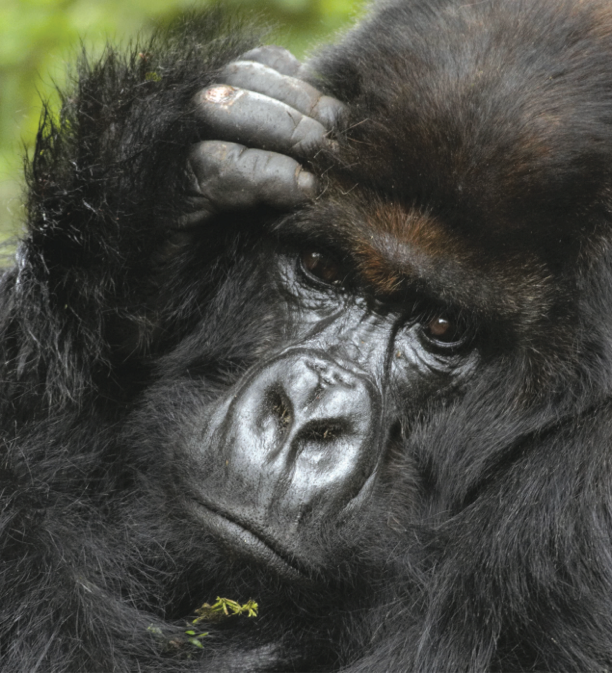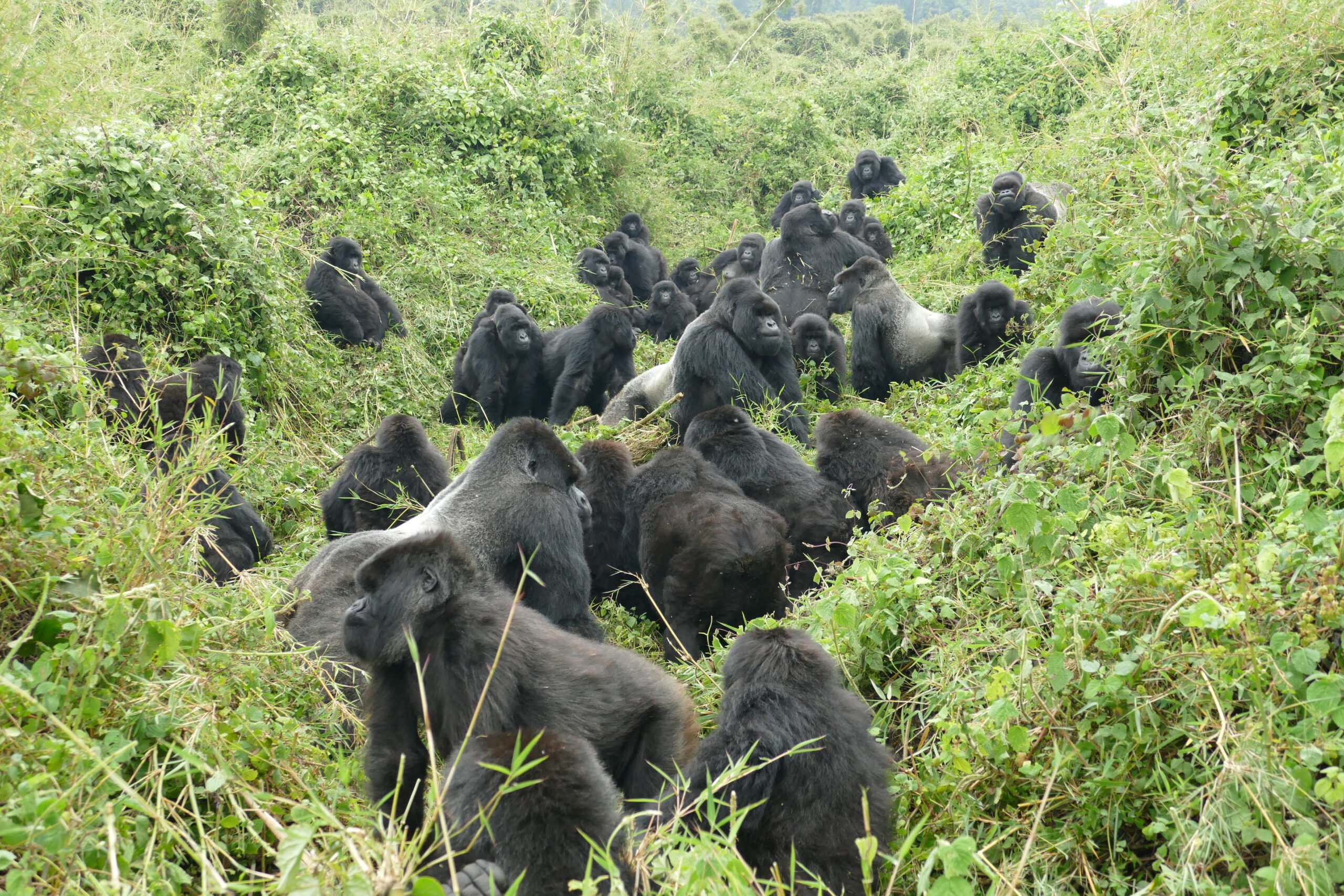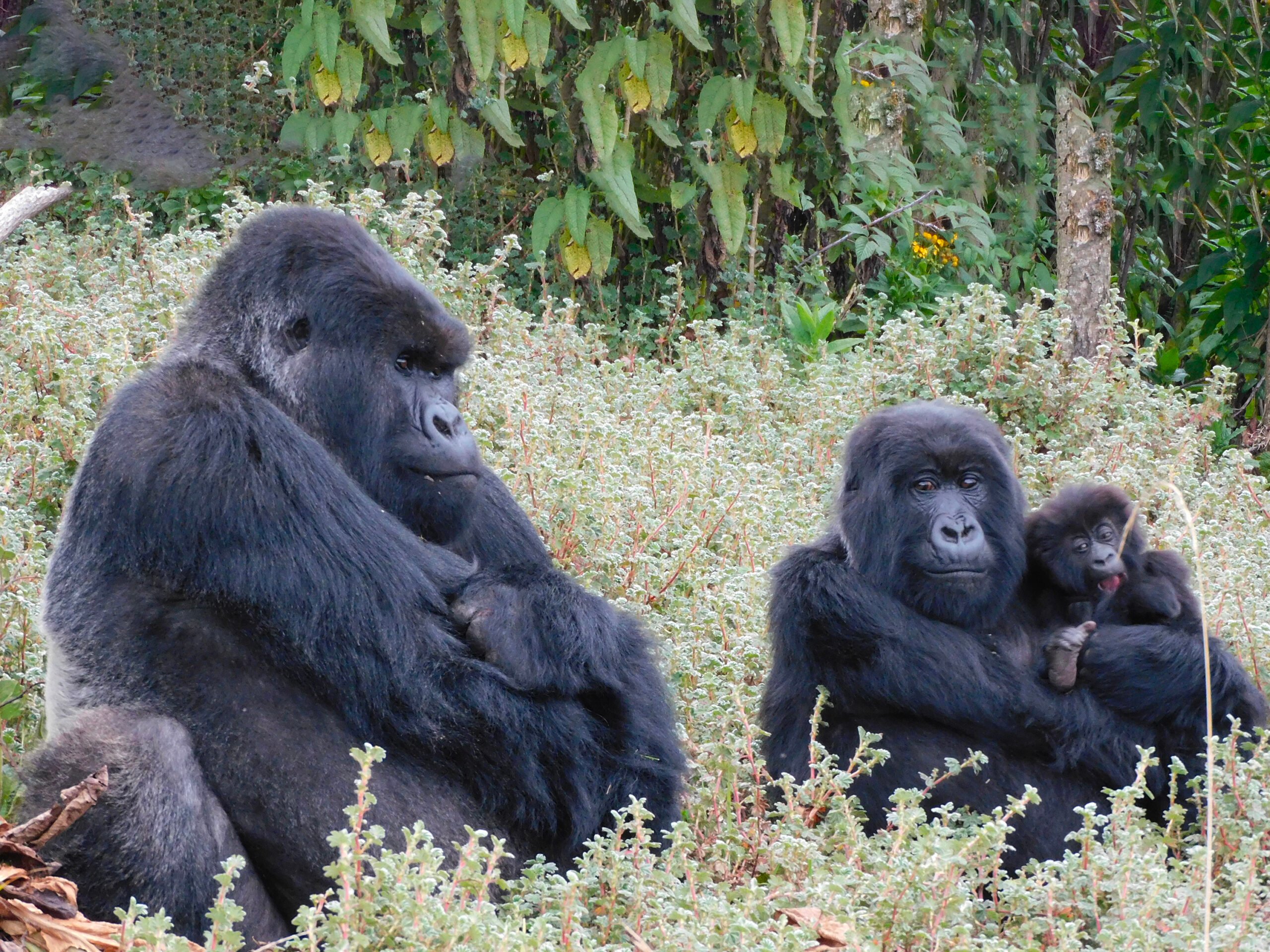On the morning of Sept. 14, our trackers at the Karisoke Research Center found legendary silverback Titus dead on his night nest. He was 35, which is quite old for a mountain gorilla male.

His last few weeks were trying. Just a few weeks ago, Titus’ 17-year-old son Umushikirano – called “Rano” by researchers – returned from a two-year sojourn as a lone silverback. At first, Rano’s arrival did not disturb the group. His one aggressive move toward Titus was rebuffed by all. Then Rano made several sexual overtures toward female Tuck, despite Titus’ protests (expressed in “pig grunts”) and Tuck’s indifference. Titus and his followers then began to travel every day in an attempt to throw off the intruder, but Rano followed them doggedly, keeping Titus on the move for several weeks. However, starting last week, Titus became weak and the group stopped traveling. Titus remained in his nest, eating and moving very little.
At 7 a.m. on the 14th, the Karisoke field team brought in veterinarian Dr. Magdalena Braum (from the Mountain Gorilla Veterinary Project) to assess Titus’ health, but he was found dead in his nest. Young male Ihumure was by his side, but there was no sign of the other group members. Ihumure’s mother had left the group in the spring and Titus was helping to care for him.
At 9:30 a.m. Rano, and other group members – males Urwibutso, Turakora and Pato – were located about 100 meters away from Titus and they continued moving around the site of Titus. The group appeared to be very stressed. At 10:30 a.m., the only female of the group, Tuck, with her juvenile son Segasira, were located moving independently, clearly avoiding the four males. Tuck also appeared very stressed.

Juvenile Ihumure was still together with Titus’ body. He was lying down one meter away from Titus and clearly distressed. When approached by our tracker team he made barking noises. Eventually, he started to move slowly away from Titus, in order to look for food.
At 12:40 the other males arrived at Titus’ site, led by Rano. They all sat down few meters from Titus. The blackback Turakora approached Titus’ body, touching his back and smelling him. The other two blackbacks sat two meters away. Rano was also looking at Titus and for few minutes nobody displayed. They spent the rest of the morning and early afternoon very close to Titus’ location.
After this, the males moved a few meters away from Titus, led by Pato and Urwibutso, as if searching for Ihumure. Rano started displaying and making calling vocalizations. They all started eating and resting.
After one hour the males approached Titus again and they stopped 10 meters away, resting. Rano was still vocalizing frequently. Ihumure was feeding and resting just a few meters away and looked in the direction of the males but avoided contact.
Tuck and her son Segasira were located about 200 meters away, at 10:30 a.m.; she was scared of the trackers’ presence and visibly stressed. She could hear the displays and the calling vocalizations of Rano but she was avoiding them and changing direction. She moved in circles the entire morning and afternoon but at 12:30 she moved back to the Titus site, and sat a few meters from the old silverback, looking at him. After few minutes she heard the four males approaching the Titus site and she quickly moved away.
For the rest of the day Tuck moved around the site and at 3 p.m. trackers decided to leave her so as to avoid any further stress. It was also decided to leave Titus’ body in the forest overnight. The presence of his body is likely important for group cohesiveness at this time.

Titus is known to be the father of Turakora and Rano (from DNA analyses) and presumed to be the father of Pato and Urwibutso (he was the dominant male at the time of their conception and had close relationships with their mothers Shangaza and Tuck respectively). Urwitbutso and Segasira are brothers.
Our main concern at the moment is that young Ihumure should not remain alone. Despite being already weaned, he has been sharing a nest regularly with Titus since his mother Bukima transferred to another group in March of this year. He has also been showing signs of illness over the past two weeks, perhaps caused by head trauma received during the recent frequent interactions with other groups since the return of Rano and also fatigue from the constant travel.
A full report on the life and history of Titus is available on our website.
Data collected by: Research Assistant Theodette Gatesire; Head Tracker Titus group Francois Nyizemana and Field Data Coordinator John Ndajambaye
Report Prepared by: Veronica Vecellio
Field staff composed with members from Titus, Bwenge and Anti-poaching teams:
Rano and the blackbacks: Theodette Gatesire (Research Assistant), Jean de Dieu Habumugisha, Nsengiyumva Esdras.
Ihumure site: Francois Nyizeymana, Magdalena Braum (Vet MGVP)
Tuck: John Ndajambaje, Saidi Kubwimana, Iyamuremye Jean de Dieu
Phocus Nsenga and Ildephonse Gatete from anti-poaching joined the field teams to provide extra support at 13:00.






